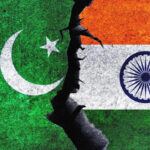Despite the despondency, the rationale for its existence is intact, and India can use it as a stage for its global ambitions
Thirty-six years after it first began, the South Asian Association for Regional Cooperation (SAARC), appears to be all but dead in the water. The year 2020 marked the sixth year since the leaders of the eight nations that make up SAARC were able to meet. Further evidence of its perilous position, if any was needed, came on the SAARC charter day on December 8, where Prime Minister Narendra Modi made it clear that India’s position on cross-border terrorism from Pakistan that led New Delhi to refuse to attend the SAARC summit in 2016 in Islamabad, is still in place. This indicates that the grouping, which cannot convene unless all leaders agree to meet, is unlikely to do so in the near future.
The shadows over the meets
Over the past year, India-Pakistan issues have impacted other meetings of SAARC as well, making it easier for member countries, as well as international agencies to deal with South Asia as a fragmented group rather than a collective, working with each country in separate silos or in smaller configurations. However, the events of 2020, particularly the novel coronavirus pandemic and China’s aggressions at the Line of Actual Control (LAC) shone a new spotlight on this mechanism, and should make the Modi government review its position and reverse that trend.
India’s problems with Pakistan on terrorism, territorial claims and on its role in blocking SAARC initiatives on connectivity and trade are well known. Even so, India’s refusal to allow Pakistan to host the SAARC summit because of those problems is akin to giving Pakistan a ‘veto’ over the entire SAARC process. The insistence is particularly puzzling given that Mr. Modi and his cabinet ministers continued to attend Shanghai Cooperation Organisation (SCO) meetings along with their Pakistani counterparts, including the SCO Heads of Government meeting in November where New Delhi even invited Pakistan Prime Minister Imran Khan (he deputed another official).
While China’s incursions in Ladakh and the Galwan killings constituted the larger concern in the year, India did not decline to attend meetings with the Chinese leadership at the SCO, the Russia-India-China trilateral, the G-20 and others. No concerns over territorial claims stopped the Modi government from engaging with Nepal either, despite Mr. K.P. Sharma Oli’s decision to change Nepal’s map and Constitution to include Indian territories. In a year when the pandemic has forced most multilateral summits to go online, it is inexplicable that India cannot attend a virtual SAARC summit hosted by Pakistan, which would allow the South Asian process to move forward.
Pandemic-caused challenges
Second, reviving SAARC is crucial to countering the common challenges brought about by the pandemic. To begin with, studies have shown that South Asia’s experience of the pandemic has been unique from other regions of the world, and this needs to be studied further in a comprehensive manner (Pandemic Preparedness and Response to COVID-19 in South Asian Countries) in order to counter future pandemics. Such an approach is also necessary for the distribution and further trials needed for vaccines, as well as developing cold storage chains for the vast market that South Asia represents.
Comment | Reviving SAARC to deal with China
The pandemic’s impact on South Asian economies is another area that calls for coordination. Apart from the overall GDP slowdown, global job cuts which will lead to an estimated 22% fall in revenue for migrant labour and expatriates from South Asian countries, there is an expected loss of about 10.77 million jobs and $52.32 billion in GDP in the tourism sector alone from the impact of COVID-19. World Bank reports that have estimated the losses have all suggested that South Asian countries work as a collective to set standards for labour from the region, and also to promoting a more intra-regional, transnational approach towards tourism, citing successful examples including the ‘East Africa Single Joint Visa’ system, or similar joint tourism initiatives like in the Mekong region or the Caribbean islands.
A time for regional initiatives
In the longer term, there will be a shift in priorities towards health security, food security, and job security, that will also benefit from an “all-of” South Asia approach. The impact of COVID-19 will be seen in broader, global trends: a growing distaste for ‘globalisation’ of trade, travel and migration all of which were seen to have helped the pandemic spread from China, as well as a growing preference for nativism, self-dependence and localising supply chains. While it will be impossible for countries to cut themselves off from the global market entirely, regional initiatives will become the “Goldilocks option” (not too hot and not too cold), or the happy medium between globalisation and hyper-nationalism. It would be important to note therefore, that as the world is divided between regional trade arrangements such as new United States-Mexico-Canada Agreement, or USMCA (North America), the Southern Common Market, or MERCOSUR for its Spanish initials (South America), the European Union (Europe), the African Continental Free Trade Area, or AfCFTA (Africa), the Gulf Cooperation Council, or GCC (Gulf) and Regional Comprehensive Economic Partnership, or RCEP (South East Asia and Australasia including China), India’s only regional trading agreement at present is the South Asian Free Trade Area, or SAFTA (with SAARC countries).
Comment | Preparing for SAARC 2.0
China’s quest
In dealing with the challenge from China too, both at India’s borders and in its neighbourhood, a unified South Asian platform remains India’s most potent countermeasure. At the border, it is clear that tensions with Pakistan and Nepal amplify the threat perception from China, while other SAARC members (minus Bhutan), all of whom are Belt and Road Initiative (BRI) partners of China will be hard placed to help individually. Significantly, from 2005-14, China actually wanted to join SAARC. Officials recall that every SAARC summit during that decade period saw a discussion on whether China could be upgraded to member status (from observer status). On each occasion, it was fought back by India and most other countries in the grouping, with the logic that despite sharing boundaries with three South Asian countries, China is not South Asian.
Despite the rebuff, China has continued to push its way into South Asia, as several statistical indicators for investment, trade, tourism and South Asian student preferences for universities (Looking Back, Looking Ahead: Foreign Policy In Transition Under Modi; Is India still the neighbourhood’s education hub?). In the past year, the Chinese government, and its Communist Party of China party arms such as the United Front Work Department, or the UFWD have used the opportunities presented by the pandemic to push ahead with this quest. Apart from sending medicines, personal protective equipment kits, and promising vaccines to most SAARC countries as part of its “Health Silk Road” initiative, China’s vice minister has held three separate meetings with combinations of Afghanistan, Bangladesh, Nepal, Pakistan and Sri Lanka, and discussed economic issues and Sinovac vaccine availability with them. Experts suggest that it is only a matter of time before Beijing holds a meeting of all SAARC countries (minus India and Bhutan), for they are all part of the BRI, and even that they will be invited to join RCEP, which India declined.
India’s steps, more bilateral
In contrast, India stepped up its health and economic diplomacy in the region, but apart from one SAARC meeting convened by Mr. Modi in March, these have been bilateral initiatives, not a combined effort for South Asia. These are some of the reasons that led all SAARC leaders other than Mr. Modi to urgently call for the revival of SAARC during their charter day messages.
Despite the despondency, the rationale for its existence remains intact: while history and political grievances may be perceived differently, geography is reality. Seen through Beijing’s prism, India’s SAARC neighbourhood may be a means to contain India, with the People’s Liberation Army strategies against India over the LAC at present, or in conjunction with Pakistan or Nepal at other disputed fronts in the future. New Delhi must find its own prism with which to view its South Asian neighbourhood as it should be: a unit that has a common future, and as a force-multiplier for India’s ambitions on the global stage.
Reclaiming SAARC from the ashes of 2020
Despite the despondency, the rationale for its existence is intact, and India can use it as a stage for its global ambitions
Thirty-six years after it first began, the South Asian Association for Regional Cooperation (SAARC), appears to be all but dead in the water. The year 2020 marked the sixth year since the leaders of the eight nations that make up SAARC were able to meet. Further evidence of its perilous position, if any was needed, came on the SAARC charter day on December 8, where Prime Minister Narendra Modi made it clear that India’s position on cross-border terrorism from Pakistan that led New Delhi to refuse to attend the SAARC summit in 2016 in Islamabad, is still in place. This indicates that the grouping, which cannot convene unless all leaders agree to meet, is unlikely to do so in the near future.
The shadows over the meets
Over the past year, India-Pakistan issues have impacted other meetings of SAARC as well, making it easier for member countries, as well as international agencies to deal with South Asia as a fragmented group rather than a collective, working with each country in separate silos or in smaller configurations. However, the events of 2020, particularly the novel coronavirus pandemic and China’s aggressions at the Line of Actual Control (LAC) shone a new spotlight on this mechanism, and should make the Modi government review its position and reverse that trend.
India’s problems with Pakistan on terrorism, territorial claims and on its role in blocking SAARC initiatives on connectivity and trade are well known. Even so, India’s refusal to allow Pakistan to host the SAARC summit because of those problems is akin to giving Pakistan a ‘veto’ over the entire SAARC process. The insistence is particularly puzzling given that Mr. Modi and his cabinet ministers continued to attend Shanghai Cooperation Organisation (SCO) meetings along with their Pakistani counterparts, including the SCO Heads of Government meeting in November where New Delhi even invited Pakistan Prime Minister Imran Khan (he deputed another official).
While China’s incursions in Ladakh and the Galwan killings constituted the larger concern in the year, India did not decline to attend meetings with the Chinese leadership at the SCO, the Russia-India-China trilateral, the G-20 and others. No concerns over territorial claims stopped the Modi government from engaging with Nepal either, despite Mr. K.P. Sharma Oli’s decision to change Nepal’s map and Constitution to include Indian territories. In a year when the pandemic has forced most multilateral summits to go online, it is inexplicable that India cannot attend a virtual SAARC summit hosted by Pakistan, which would allow the South Asian process to move forward.
Pandemic-caused challenges
Second, reviving SAARC is crucial to countering the common challenges brought about by the pandemic. To begin with, studies have shown that South Asia’s experience of the pandemic has been unique from other regions of the world, and this needs to be studied further in a comprehensive manner (Pandemic Preparedness and Response to COVID-19 in South Asian Countries) in order to counter future pandemics. Such an approach is also necessary for the distribution and further trials needed for vaccines, as well as developing cold storage chains for the vast market that South Asia represents.
Comment | Reviving SAARC to deal with China
The pandemic’s impact on South Asian economies is another area that calls for coordination. Apart from the overall GDP slowdown, global job cuts which will lead to an estimated 22% fall in revenue for migrant labour and expatriates from South Asian countries, there is an expected loss of about 10.77 million jobs and $52.32 billion in GDP in the tourism sector alone from the impact of COVID-19. World Bank reports that have estimated the losses have all suggested that South Asian countries work as a collective to set standards for labour from the region, and also to promoting a more intra-regional, transnational approach towards tourism, citing successful examples including the ‘East Africa Single Joint Visa’ system, or similar joint tourism initiatives like in the Mekong region or the Caribbean islands.
A time for regional initiatives
In the longer term, there will be a shift in priorities towards health security, food security, and job security, that will also benefit from an “all-of” South Asia approach. The impact of COVID-19 will be seen in broader, global trends: a growing distaste for ‘globalisation’ of trade, travel and migration all of which were seen to have helped the pandemic spread from China, as well as a growing preference for nativism, self-dependence and localising supply chains. While it will be impossible for countries to cut themselves off from the global market entirely, regional initiatives will become the “Goldilocks option” (not too hot and not too cold), or the happy medium between globalisation and hyper-nationalism. It would be important to note therefore, that as the world is divided between regional trade arrangements such as new United States-Mexico-Canada Agreement, or USMCA (North America), the Southern Common Market, or MERCOSUR for its Spanish initials (South America), the European Union (Europe), the African Continental Free Trade Area, or AfCFTA (Africa), the Gulf Cooperation Council, or GCC (Gulf) and Regional Comprehensive Economic Partnership, or RCEP (South East Asia and Australasia including China), India’s only regional trading agreement at present is the South Asian Free Trade Area, or SAFTA (with SAARC countries).
Comment | Preparing for SAARC 2.0
China’s quest
In dealing with the challenge from China too, both at India’s borders and in its neighbourhood, a unified South Asian platform remains India’s most potent countermeasure. At the border, it is clear that tensions with Pakistan and Nepal amplify the threat perception from China, while other SAARC members (minus Bhutan), all of whom are Belt and Road Initiative (BRI) partners of China will be hard placed to help individually. Significantly, from 2005-14, China actually wanted to join SAARC. Officials recall that every SAARC summit during that decade period saw a discussion on whether China could be upgraded to member status (from observer status). On each occasion, it was fought back by India and most other countries in the grouping, with the logic that despite sharing boundaries with three South Asian countries, China is not South Asian.
Despite the rebuff, China has continued to push its way into South Asia, as several statistical indicators for investment, trade, tourism and South Asian student preferences for universities (Looking Back, Looking Ahead: Foreign Policy In Transition Under Modi; Is India still the neighbourhood’s education hub?). In the past year, the Chinese government, and its Communist Party of China party arms such as the United Front Work Department, or the UFWD have used the opportunities presented by the pandemic to push ahead with this quest. Apart from sending medicines, personal protective equipment kits, and promising vaccines to most SAARC countries as part of its “Health Silk Road” initiative, China’s vice minister has held three separate meetings with combinations of Afghanistan, Bangladesh, Nepal, Pakistan and Sri Lanka, and discussed economic issues and Sinovac vaccine availability with them. Experts suggest that it is only a matter of time before Beijing holds a meeting of all SAARC countries (minus India and Bhutan), for they are all part of the BRI, and even that they will be invited to join RCEP, which India declined.
India’s steps, more bilateral
In contrast, India stepped up its health and economic diplomacy in the region, but apart from one SAARC meeting convened by Mr. Modi in March, these have been bilateral initiatives, not a combined effort for South Asia. These are some of the reasons that led all SAARC leaders other than Mr. Modi to urgently call for the revival of SAARC during their charter day messages.
Despite the despondency, the rationale for its existence remains intact: while history and political grievances may be perceived differently, geography is reality. Seen through Beijing’s prism, India’s SAARC neighbourhood may be a means to contain India, with the People’s Liberation Army strategies against India over the LAC at present, or in conjunction with Pakistan or Nepal at other disputed fronts in the future. New Delhi must find its own prism with which to view its South Asian neighbourhood as it should be: a unit that has a common future, and as a force-multiplier for India’s ambitions on the global stage.






NO COMMENT